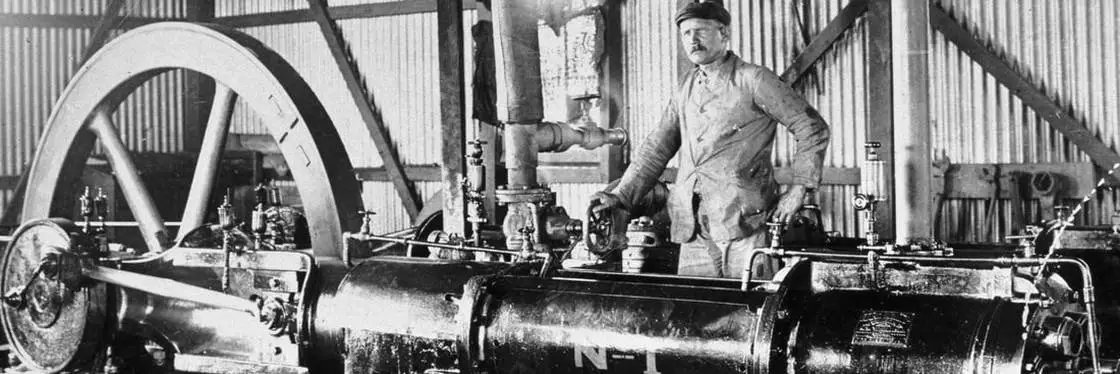Engineers Union succeeds in the High Court, expanding Federal power
The Amalgamated Society of Engineers v The Adelaide Steamship Company Limited and Ors (1920)
Facts of the case
A union made up of working engineers (the Amalgamated Society of Engineers) brought a pay dispute claim to the High Court on behalf of its members. The case was against 844 employers spread throughout the nation.
Union members were being paid the Award wages of the State in which they worked. They wanted to move onto a new Federal Government Award that had recently been legislated and offered higher wages.
Three of the employers were different departments under the Western Australian Government. Most of the companies, such as the Adelaide Steamship Co, were private employers.
An Amalgamated Society of Engineers membership card from 1900. Museum of Applied Arts & Sciences
This canvas trade union banner was painted in 1890 by Kift & Smith (Ballarat). Source: Museums Victoria
Issues considered by the court
The High Court had to determine whether the Commonwealth Parliament had the power to make laws that bind the States with respect to conciliation and arbitration of industrial disputes that extended beyond the borders of one State.
Decision
The High Court, by a majority of 6:1, decided in favour of the Union. As a result the Engineers could move over to the Federal award under the power of section 51 (xxxv) of the Constitution.
The decision had a profound impact on the balance of power between the Commonwealth and the States.
Background to the case
Established in Australia 1851, the original Amalgamated Engineering Union was a branch of the British union. It was registered for the first time in 1905 under the new Commonwealth industrial relations laws. The Union represented blacksmiths, fitters, patternmakers, turners and machinists.
Robert Menzies, who later became Prime Minister, appeared for the Union in the Engineers Case. Menzies was only 25 years old. In 1922, the Governments of four states applied to the Privy Council for leave to appeal from the High Court’s decision in the Engineers Case. The Privy Council refused the application.
Did you know?
- The Engineers Case overturned previously understood doctrines regarding State powers.
- The majority of the High Court said that the Constitution should be given effect “according to its own terms” and that the Constitution should be permitted “to speak with its own voice”.
- The result of the Engineers Case is that the Commonwealth has assumed a more dominant position in the Australian federation compared to the States.
The Constitution ‘is the political compact of the whole of the people of Australia, enacted into binding law by the Imperial Parliament, and it is the chief and special duty of this Court faithfully to expound and give effect to it according to its own terms, finding the intention from the words of the compact, and upholding it throughout precisely as framed.’ - Engineers Case, per Knox CJ, Isaacs, Rich and Starke JJ
An Amalgamated Society of Engineers membership certificate 1881. Archives Program, Australian National University




